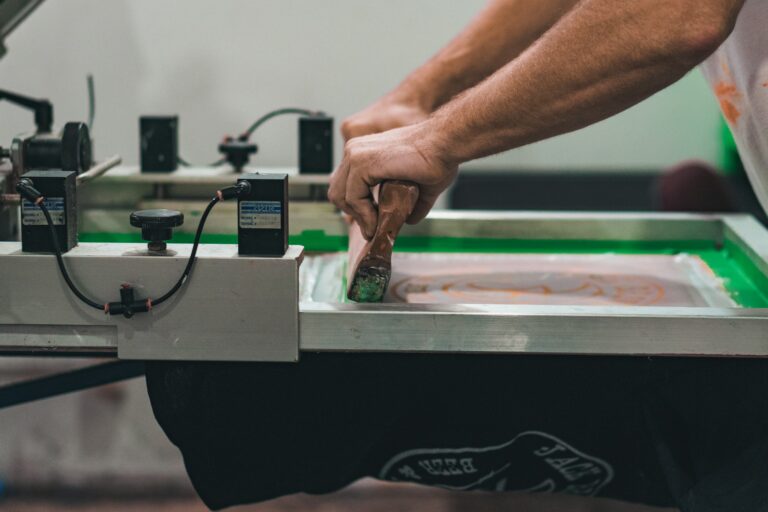In the vibrant fashion marketplace, standing out extends beyond runway glamor to meticulous behind-the-scenes operations. The success of a fashion business hinges on optimizing these unseen efforts—from refining the end to end supply chain process to crafting a global brand identity.
The journey of apparel from concept to retail shelf involves multiple stages—fashion design processes, production, marketing, and sales. Each stage requires a meticulous approach to ensure the final product resonates with audiences and aligns with the brand’s ethos.
In essence, behind-the-scenes optimizations streamline processes, enabling a smooth operational flow essential for conquering the fashion frontier. Effective logistics, precise distribution, and efficient inventory management are pivotal, forming an integral part of the end to end supply chain process.
Let’s explore how fashion brands can ensure optimal performance quite effectively.
Adopting The Right Technology Solutions
Technology acts as a cornerstone, drastically altering the manner in which fashion brands function and engage with their customers. Advanced technologies are being leveraged to improve downstream visibility and foster supply chain collaboration, significantly enhancing supply chain operations.
The transition from traditional brick-and-mortar establishments to digital platforms exemplifies this transformative venture. Yet, the digital journey doesn’t culminate here; it merely initiates.
Let’s explore how technology is crucial in redefining the fashion realm:
Accelerating the Direct-to-Consumer Approach
The conventional retail paradigm is evolving to endorse a direct-to-consumer (DTC) framework. This transformation is driven by the aspiration to forge a more tailored shopping ambiance.
Through the harnessing of technology, fashion brands are able to enhance their virtual retail value and service delivery chains, thereby meeting customer expectations and boosting customer retention. Instruments like 3D and 2D computer-aided design (CAD) in tandem with artificial intelligence (AI) play a significant role in enriching the virtual shopping expedition.
Implementing Enterprise Resource Planning (ERP) Systems
The importance of a centralized system to orchestrate various business functions is undeniable.
This is where enterprise resource planning systems come into play. ERP systems serve as the nerve center of a fashion business, streamlining processes ranging from procurement and production to sales and customer relationship management and enhancing logistics and distribution efficiency.
By providing a consolidated view of critical business data in real-time, ERP systems aid in making informed decisions swiftly, ensuring optimal utilization of resources, and enhancing operational efficiencies.
Moreover, ERP systems facilitate better communication and collaboration among different departments, paving the way for a cohesive work environment. Timing, precision, and coordination are pivotal, therefore, implementing an ERP system is a prudent investment for fashion brands aiming to thrive in a competitive market, ensuring they are always in vogue with operational excellence.
Utilizing AI for Process Optimization
Ranging from client-centric solutions to refining operations behind the curtain, AI has infiltrated every facet of the industry. Brands that welcome AI, combining technology and data intelligence within their procedures, are the ones making strides in this competitive arena. AI aids in superior decision-making, amplifies customer engagements, and fine-tunes operational efficacies, positioning brands a notch higher.
The integration of technology in the fashion sector is far from being a fleeting trend; it’s an imperative. It orbits around maintaining relevance, competitiveness, and resonance in a market that morphs with each passing moment. The saying ‘adapt or perish’ resonates more profoundly as fashion brands endeavor to align with the digital wave, ensuring a harmonious fusion of creativity and technology to nurture growth and longevity.
Supply Chain and Operational Efficiencies
The backbone of every successful fashion brand lies in its adeptness at orchestrating a seamless end to end supply chain process from the conception of designs to the delivery of finished products to the market. A significant catalyst in this operation is the integration of enterprise resource planning systems.
Let’s delve into how ERP systems act as the linchpin in enhancing supply chain performance and operational efficiencies:
Speeding up the Go-to-Market Process
The fashion industry is one where timing is quintessential. An ERP system streamlines the entire supply chain, from procuring raw materials to the manufacturing and shipment of finished products.
By providing real-time data and insights, ERP systems facilitate quicker decision-making and identification of issues, ensuring a swifter go-to-market process, which is crucial in meeting customer demands and capitalizing on market opportunities.
The traditional supply chain is evolving to meet the demands of this fast-paced industry, and ERP systems play a vital role in this transformation.
Bridging Art and Science through Effective Merchandising
Balancing the creative aspects of fashion with the pragmatic needs of business operations is an art in itself. ERP systems support this balance by offering a structured approach to managing the fashion design processes, inventory, and supplier relationships.
By optimizing the procurement of raw materials and ensuring supply chain flow process and visibility, ERP systems enable a seamless blend of creativity and operational efficiency, propelling product designs from sketches to store shelves proficiently.
Mastering Digital Tools and Analytics for Informed Decision-Making
In an age of data-driven decisions, having precise analytics at your fingertips is indispensable. ERP systems serve as a reservoir of valuable data, aiding in demand planning, strategic planning, and analysis of customer interactions.
Through meticulous data analysis, fashion brands can glean insights into market trends, customer preferences, and the performance of various supply chain processes, fostering informed decision-making and fine-tuning strategies to align with market dynamics.
Designing and Pushing the Right Product at the Right Time, at the Right Price, with Optimal Stock Quantities
The crux of thriving in the fashion industry lies in meeting customer desires with the right products at opportune moments. Through ERP’s robust supply chain management system, fashion brands gain an eagle-eye view of their inventory, manufacturing processes, and supply chain process flow and visibility.
This holistic view aids in accurate demand planning, ensuring that the right products are designed, manufactured, and pushed to the market with optimal stock quantities to meet customer demands without overburdening the inventory.
Moreover, by fostering strong supplier relationships, ERP systems ensure a steady flow of raw materials, timely manufacturing, and timely shipments, culminating in heightened customer satisfaction and a sound financial bottom line.
Community Engagement and Brand Building
The fashion industry isn’t solely about the end products that grace the runway or the retail shelves; it’s about the narrative, the journey, and the faces behind the creations. Engaging with the community and building a resonant brand goes beyond just selling apparel. Enhancing the customer experience by forming a genuine connection with the audience is crucial for brand building.
Here’s how fashion brands can forge a deeper connection with their audience and build a robust brand identity:
Showcasing the Process, Not Just the Product
The charm of a fashion brand often lies in the stories sewn into the fabric of its creations. By showcasing the process behind the creation of a product, fashion brands can build a personal connection with the community, allowing them to appreciate the craftsmanship, creativity, and dedication that goes into every stitch.
This level of engagement makes the brand more relatable and human, creating a loyal customer base that values the brand’s authenticity and transparency.
Additionally, portraying the meticulous approach to inventory management and emphasizing the steps taken to manage material costs underscore the brand’s commitment to delivering quality products.
Offering Behind-the-Scenes Peeks
There’s a certain allure to witnessing what goes on behind the scenes – be it shooting campaigns, brainstorming in merchandising meetings, or the hustle and bustle of trade shows. Offering a glimpse into these aspects not only piques the curiosity of the audience but also provides them with an understanding of the brand’s values, the people behind the products, and the journey of a product from conception to market.
Providing real-time information during production planning stages, for example, can give customers a deeper insight into the meticulous care taken to ensure quality and efficiency throughout the entire business operation. It’s an engaging way to build a community around the brand, fostering a sense of belonging and loyalty.
Moreover, extending excellent customer service before, during, and after these glimpses can enhance the overall customer experience, further solidifying the bond between the brand and its audience.
Strategic Partnerships and Collaborations
The fabric of success in the fashion industry is often interwoven with the threads of strategic partnerships and meaningful collaborations.
These alliances can significantly amplify a brand’s reach, impact, and resonance in the market. Therefore, having the right allies can catapult a brand into realms of success it might not achieve alone.
Strategic partnerships, be it with suppliers, designers, or even other brands, can provide a plethora of benefits including access to new customer bases, shared resources, and a fusion of creativity and expertise that can result in unique, captivating collections.

Management and Business Operations
The fashion realm is a fluid and ever-evolving landscape, necessitating a nimble approach to management and business operations to stay in vogue. Here’s a closer look at how adept management practices are quintessential in navigating the intricacies of the fashion business:
Rethinking Strategies to Meet Changing Consumer Demands and Optimize Operations
With consumer preferences shifting like trends, fashion brands need to constantly recalibrate their strategies to stay relevant and competitive. This involves a holistic review of operations, supply chains, and marketing strategies to ensure they are aligned with current market dynamics and consumer expectations.
An agile approach to strategic planning allows for prompt responses to market changes, ensuring the brand remains in step with consumer demands and operational efficiencies.
Managing the Entire Process from Design to Delivery
The journey of a fashion item from design to delivery is intricate and demands meticulous management.
Efficient management practices ensure that every phase of this journey is executed seamlessly, allowing the brand to focus on other strategic aspects such as market expansion, brand building, and customer engagement. A streamlined process from design to delivery not only enhances operational efficiency but also accelerates the go-to-market strategy, which is crucial in a fast-paced industry like fashion.
Conclusion
This article explores the intricate tapestry of behind-the-scenes optimizations and unveils insights for fashion brands that they can use to boost their operational efficacy.
From leveraging cutting-edge technology and streamlining the end-to-end supply chain process, to engaging with the community and forging strategic partnerships, these optimizations are the linchpin for sustainable growth and competitiveness.







